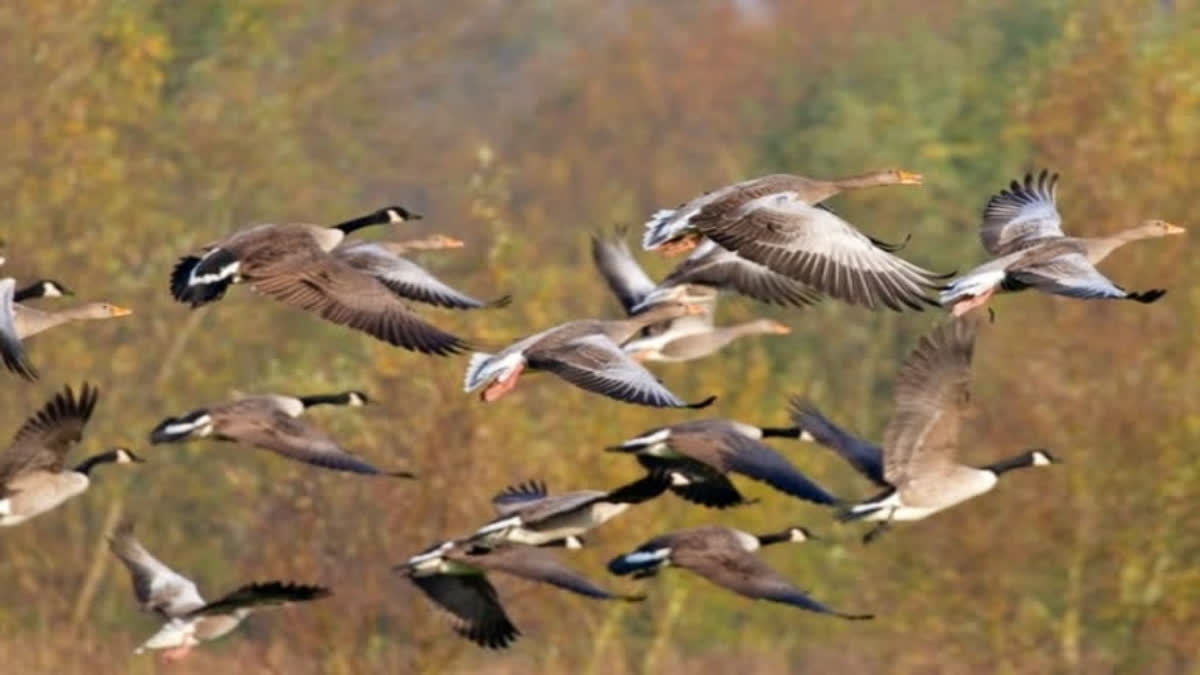New Delhi: Severe space weather events have been linked to a 9-17 per cent lowering in the numbers of migrating birds, in both spring and fall, according to new research.
Space weather events such as solar flares and other energetic outbursts cause periodic disruptions to Earth's magnetic field, which migratory birds rely on for long-distance navigation.
The remaining birds that chose to migrate during such events seemed to experience more difficulty navigating, especially under overcast conditions in autumn, the researchers from the University of Michigan (U-M), US, said in their study that used a 23-year dataset of bird migration across the Great Plains, a major migratory corridor, for analysis.
"Our findings highlight how animal decisions are dependent on environmental conditions - including those that we as humans cannot perceive, such as geomagnetic disturbances - and that these behaviours influence population-level patterns of animal movement," said Eric Gulson-Castillo, lead author of the study published in the journal Proceedings of the National Academy of Sciences.
For their analysis, the researchers used images collected at 37 radar stations in the Great Plains' central flyway, spanning more than 1,600 kilometres from the US states of Texas to North Dakota. The flat terrain was selected for study to minimise influences from mountainous topography or oceanic coastlines.
The radar images or scans detect groups of hundreds to thousands of migrating birds, using which the migration intensity can be estimated and direction of flight can be measured, the researchers said in their study. The community of nocturnally migrating birds in this region is primarily composed of a diverse set of perching birds such as thrushes and warblers; shorebirds such as sandpipers and plovers; and waterfowl such as ducks, geese and swans.
In all, the datasets for analysis included 1.7 million radar scans from the fall and 1.4 million from the spring. The researchers then matched the radar data with a geomagnetic disturbance index, that represented the maximum hourly change from background magnetic conditions. The index was built from data collected from a worldwide network of geomagnetic ground stations.
Using statistical models, the team then measured the effects of magnetic disturbances on bird migration. Along with lowering in numbers, the researchers also found that during geomagnetic disturbances in the fall, migrating birds appeared to drift with the wind more frequently, instead of expending great effort to battle crosswinds.
That is, "effort flying" against the wind was reduced by 25 per cent under cloudy skies during strong solar storms in the fall, suggesting that a combination of obscured celestial cues and magnetic disruption may hinder navigation, they said.
"Our results suggest that fewer birds migrate during strong geomagnetic disturbances and that migrating birds may experience more difficulty navigating, especially under overcast conditions in autumn," said Gulson-Castillo, also a doctoral student in the U-M Department of Ecology and Evolutionary Biology.
"As a result, they may spend less effort actively navigating in flight and consequently fly in greater alignment with the wind," said Gulson-Castillo.
Also read- Climate change may make India and the Indus Valley too hot for up to 2.2 billion people: Study



